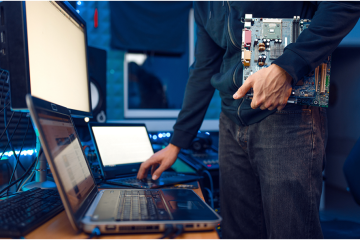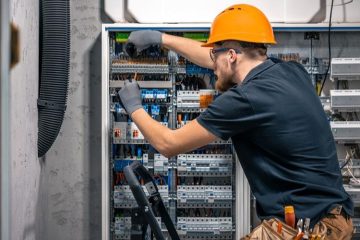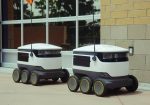5 Challenges of Integrating Security Robots & AI in Smart Cities

The demand for AI-powered security solutions has increased significantly as urban environments become denser and more complex. Cities such as Singapore, which are rapidly advancing towards becoming fully connected smart cities, are exploring how technologies like the security robot can complement human personnel and strengthen surveillance networks. While the promise of efficiency, cost-effectiveness, and round-the-clock operations is clear, integrating robots into existing frameworks of smart city security solutions is not without challenges. These difficulties arise from technical, operational, financial, and regulatory dimensions that organisations must carefully navigate.
1. Technical Integration and Infrastructure Limitations
Deploying a security robot in Singapore requires more than simply purchasing the machines. The infrastructure within buildings, transport hubs, or open spaces must be able to support seamless operations. Connectivity is one of the primary barriers. Robots rely heavily on stable networks, often requiring 5G or private wireless systems to process and transmit data in real time. Their sensors and AI-driven analytics may experience lags or blind spots without this backbone. Compatibility is another challenge. Many existing CCTV networks and alarm systems were not designed to be integrated with robotic platforms, creating costly upgrades or middleware requirements. Power management also poses hurdles, as robots must either dock regularly for charging or rely on battery-swapping systems that require additional operational planning.
2. Human-Robot Collaboration and Workforce Acceptance
While AI-powered security solutions promise to augment manpower, acceptance among the human workforce remains a critical issue. Security officers may feel threatened by automation, perceiving robots as a replacement rather than a complement. This instance can lead to resistance in adoption and difficulties in creating smooth collaboration between human teams and robotic systems. Furthermore, while robots excel in repetitive patrols and data gathering, they lack the situational judgement and emotional intelligence of human officers. For example, handling disputes, providing reassurance, or interpreting nuanced behaviour in a crowded environment are still tasks best suited to people. Organisations must therefore balance task allocation, ensuring robots take on predictable duties while human staff handle complex or sensitive scenarios.
3. Cost and Return on Investment Concerns
Despite the long-term efficiency benefits, the initial cost of acquiring and deploying smart city security solutions can be prohibitive. A fully functional security robot with advanced sensors, AI processors, and autonomous navigation systems can be a significant capital expense. Beyond purchase, there are ongoing costs for software licensing, maintenance, upgrades, and network infrastructure. The question for many organisations becomes whether these solutions offer a clear return on investment compared to increasing traditional manpower. While labour shortages in the city-state’s security sector may justify investment, smaller property owners or organisations with modest budgets may struggle to adopt these systems meaningfully.
4. Regulatory and Privacy Challenges
The use of AI-powered security solutions in public or semi-public spaces inevitably raises concerns over compliance and privacy. Security robots must comply with existing laws governing surveillance, data protection, and public safety. High-resolution cameras and facial recognition functions may fall under regulatory scrutiny, requiring operators to demonstrate responsible use and adherence to the Personal Data Protection Act (PDPA). Clear policies must be established on how data is stored, who can access it, and how long it is retained. Additionally, public acceptance plays a role. Citizens may feel uneasy with the idea of being monitored by autonomous machines, which could hinder broader deployment if not managed transparently.
5. Cybersecurity and System Vulnerabilities
Integrating security robots into larger smart city security solutions creates a new layer of vulnerability. Every connected device is a potential entry point for cyberattacks. A robot could be rendered inoperable, manipulated, or used as a gateway to larger surveillance systems if compromised. This risk means organisations must invest not only in hardware but also in robust cybersecurity frameworks, encryption protocols, and continuous monitoring systems. Ensuring that AI algorithms are resistant to manipulation, such as adversarial attacks that trick sensors into misclassifying objects, is equally essential to maintain trust in automated operations.
Conclusion
The integration of security robots and AI-powered security solutions holds strong potential for enhancing efficiency and resilience in the city-state’s pursuit of a smart city vision. However, challenges relating to infrastructure, workforce acceptance, cost, regulation, and cybersecurity cannot be ignored. Stakeholders must take a balanced approach for successful implementation—investing not only in hardware but also in human training, legal compliance, and robust digital safeguards. The Lion City can position itself at the forefront of safe, sustainable, and intelligent urban security systems by addressing these challenges strategically.
Contact KABAM Robotics to future-proof your property’s security.

















